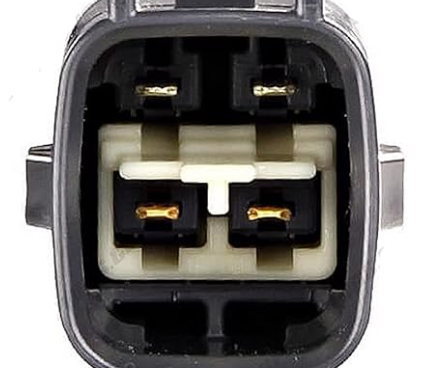Your cart is currently empty!
Lexus GS300 234-9051 upstream oxygen sensor
Understand the common faults of the Lexus GS300 234-9051 upstream oxygen sensor and how to solve them
The Lexus GS300 is known for its exceptional performance and luxury, but like any vehicle, it can experience issues over time. One critical component that can develop faults is the 234-9051 upstream oxygen sensor. In this article, we will explore the common problems associated with this sensor in the Lexus GS300 and provide solutions to address them effectively.

The Importance of the 234-9051 Upstream Oxygen Sensor
Before diving into the common faults, let's understand the significance of the 234-9051 upstream oxygen sensor. This sensor is a vital part of the engine management system, responsible for measuring the oxygen levels in the exhaust gases before they enter the catalytic converter. The data it provides helps the engine control unit (ECU) adjust the air-fuel mixture for optimal performance, fuel efficiency, and emission control in the Lexus GS300.
Common Faults of the 234-9051 Upstream Oxygen Sensor
Check Engine Light (CEL): A persistent CEL is often the first indicator of a problem with the 234-9051 sensor. It can be triggered by issues such as a faulty sensor, wiring problems, or an improper air-fuel mixture.
Decreased Fuel Efficiency: A malfunctioning sensor can lead to poor fuel economy, as the ECU may not receive accurate data to fine-tune the air-fuel mixture. This results in inefficient combustion.
Rough Idling and Misfires: When the sensor fails to provide accurate readings, it can cause the engine to run too rich or too lean. This can lead to rough idling, engine misfires, and a noticeable drop in performance.
Increased Emissions: A failing 234-9051 upstream oxygen sensor can lead to higher emissions, potentially causing the vehicle to fail emissions tests and harming the environment.
How to Solve Common Faults 234-9051 upstream oxygen sensor
Addressing issues with the 234-9051 upstream oxygen sensor in your Lexus GS300 requires a systematic approach:
Diagnostic Scan: Begin by performing a diagnostic scan using an OBD-II scanner. This will help identify any specific error codes related to the sensor.
Inspect Wiring and Connections: Check the sensor's wiring and connections for damage or corrosion. Ensure the wiring is properly connected and repair or replace any damaged components.
Replace the Sensor: If the sensor itself is faulty, it's advisable to replace it with a genuine 234-9051 upstream oxygen sensor compatible with your Lexus GS300 model.
Reset ECU: After replacing the 234-9051 upstream oxygen sensor, reset the ECU to clear any stored error codes. This will allow the ECU to relearn the new sensor's characteristics.
Conclusion:
The 234-9051 upstream oxygen sensor is a critical component in maintaining the performance and efficiency of your Lexus GS300. Understanding the common faults associated with this sensor and knowing how to address them is essential for ensuring your vehicle runs smoothly, achieves optimal fuel economy, and remains environmentally responsible. Regular maintenance and prompt troubleshooting can go a long way in preserving the reliability of your Lexus GS300.






Leave a Reply